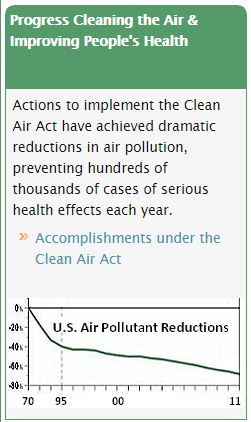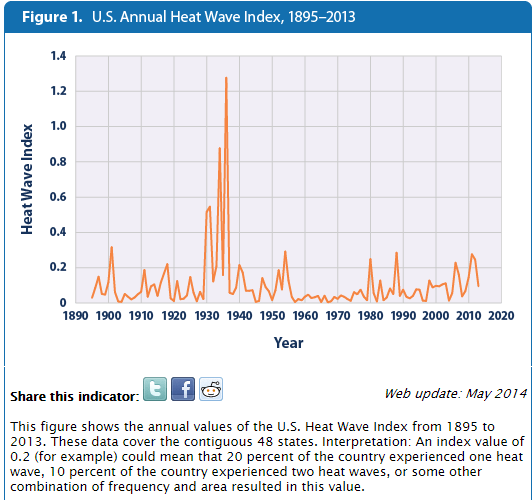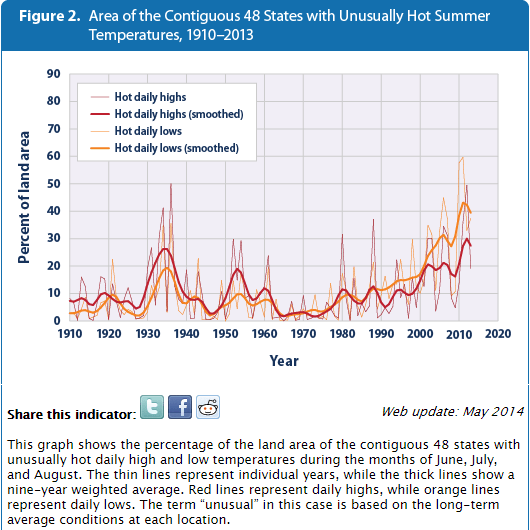The EPA says that pollution has greatly diminished over the past 45 years, has continued to decrease, and that this decline in pollution prevents hundreds of thousands of cases of disease every year.
Air Pollution and the Clean Air Act | US Environmental Protection Agency
The EPA also says that pollution is getting worse, is causing more heatwaves, and is impacting health
Learn About Carbon Pollution From Power Plants | Carbon Pollution Standards | US EPA
The EPA also says that the US is experiencing far fewer heatwaves than it did 80 years ago.
The EPA also says that the US is experiencing more heatwaves than it did 85 years ago.
The science is settled. Pollution is getting both better and worse, producing both more and less disease, and both more and less heatwaves.





Hallelujah!
You did say you were writing a book, right?
I’m sure it would be a good read, but with the way the Mann suit has dragged on and the past vicious behavior (even just here on this blog) of others he has exposed, I’d be very surprised if he managed to get it published any time soon.
If there’s any way to get it done, I think the key would be to stick exclusively to known facts and let the facts speak for themselves. It wouldn’t be the Tony we’re used to reading! But it would still be a historic piece of journalism and historiography and well worth owing a copy.
It could also be instrumental in spurring federal prosecutions under a future administration.
Oh Noes! It’s the hot/cold monster again!
The EPA is just bipolar.
http://www.shedsimove.com/sites/default/files/images/images/Bi%20Polar%20Bear%20Shed%20Simove%20x_0.jpg
http://cl.jroo.me/z3/B/V/c/e/a.baa-Bipolar-Bear.PNG
I’m of two minds about this post.
It is all about funding.
It is a crock when they make claims about warming worsening Lyme disease. It’s not a tropical zoonosis. Looking at the etiology / epidemiology and pattern of spread across the U.S. would make this evident.
The increase in incidence of Lyme disease is and has been occurring for the last 25-30 years for one primary reason. The increase in deer populations, and especially white tail deer, forcing them into ever closer cohabitation with humans in many parts of the country. It is really very simple. More deer=more ticks= more Lyme disease.
But if you asked the average person what “questing” is in reference to ticks they probably couldn’t tell you.
You know, I was an SF medic in 10th SFG and we spent a whole lot of time in the woods in the NE US and I never heard of single SF troop being diagnoses with Lyme disease. Maybe someone should ask why the incidence is relatively low in the US Army despite the fact they train in areas with heavy deer populations and thus tick infestations? It couldn’t be because of high top boots with bloused trousers, long sleeves, and strong DEET now could it?
Malaria isn’t either but that still doesn’t stop them.
I’d like to go for a walk but I don’t want to.
F. Scott Fitzgerald obviously didn’t know the EPA when he said “The test of a first rate intelligences is the ability to hold two opposed ideas in mind at the same time and still retain the ability to function.”
The EPA is just single minded about more regulation and simply ignores anything that doesn’t support the goal. And, they keep moving the goal post so less pollution is really more pollution that needs to become less pollution…
More “unsettled” science…
The new research, published this week in Proceedings of the National Academy of Sciences USA, shows that structures once thought to be Earth’s oldest microfossils do not compare with younger fossil candidates but have, instead, the character of peculiarly shaped minerals.
In 1993, US scientist Bill Schopf described tiny carbon-rich filaments within the 3.46 billion-year-old Apex chert (fine-grained sedimentary rock) from the Pilbara region of Western Australia, which he likened to certain forms of bacteria, including cyanobacteria.
These ‘Apex chert microfossils’ – between 0.5 and 20 micrometres wide – soon became enshrined in textbooks, museum displays, popular science books and online reference guides as the earliest evidence for life on Earth. In 1996, these structures were even used to test and help refute the case against ‘microfossils’ in the Martian meteorite ALH 84001
Before his death Professor Brasier commented: “This research should, at long last, provide a closing chapter for the ‘Apex microfossil’ debate.
http://www.bristol.ac.uk/news/2015/april/oldest-fossils-controversy-resolved.html